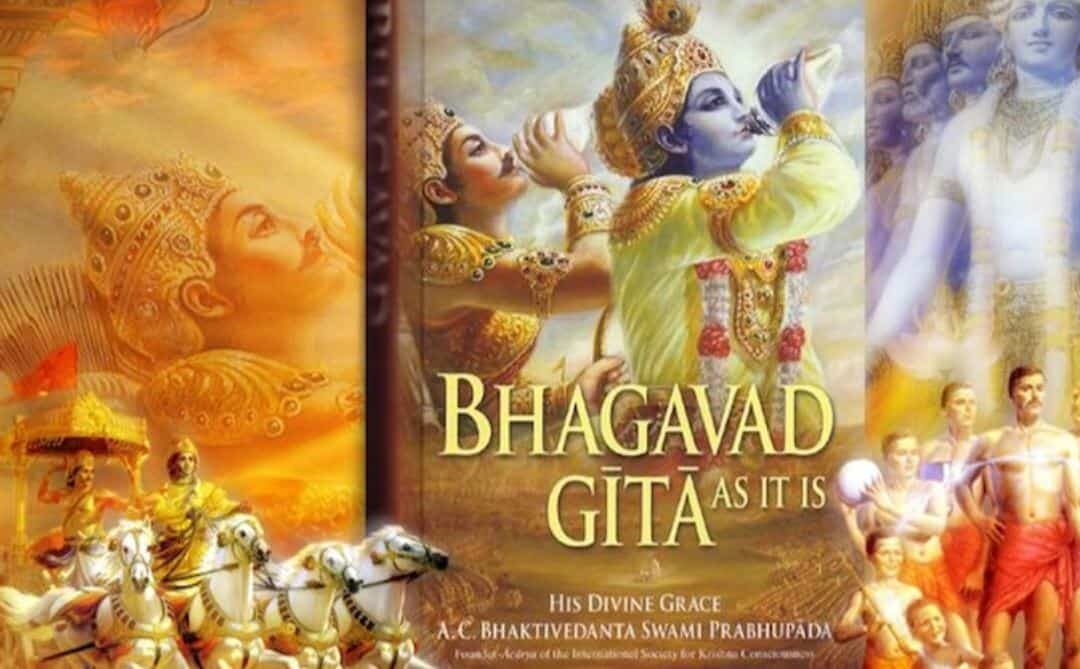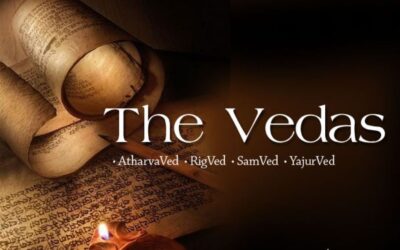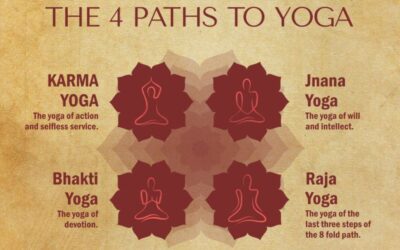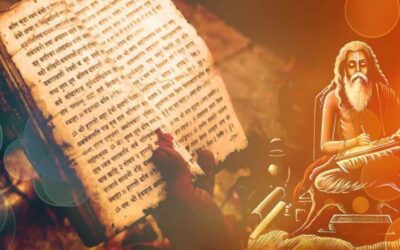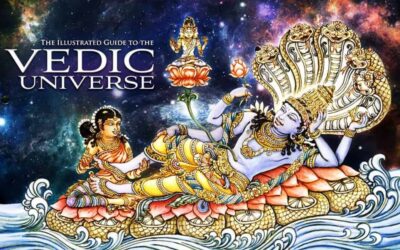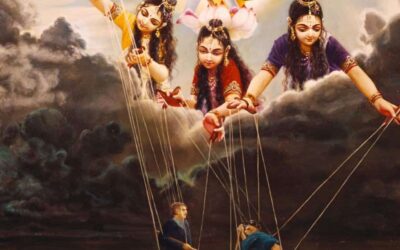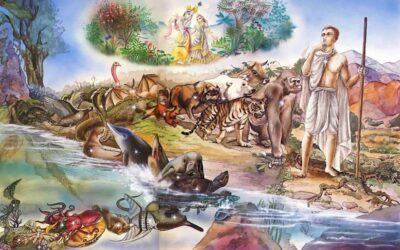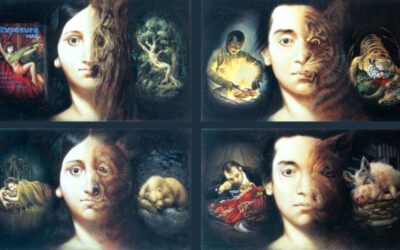Introduction to Bhagavad Gita – Purpose and Subject Matter
- Bhagavad Gita is the essence of all Vedic knowledge. It will take hundreds of years just to merely read all Vedic scriptures, then what can be said on applying this knowledge in day-to-day life. Therefore, Bhagavad Gita is one scripture that summarizes all the essential knowledge from all Vedic scriptures and presents it to mankind.
- It is mentioned in the Vedic scriptures that if all the Vedic literature are like the wishful filling cows, then the Bhagavad Gita is the Nectarian milk from all the cows.
- The purpose of the Bhagavad Gita is to deliver mankind from the darkness of material existence. Unless one comes to the point of questioning about his real identity, karma, destiny, and cause of all the sufferings; cannot be considered a human being. Human life begins when this sort of inquiry is awakened in one’s mind. Bhagavad Gita provides ultimate solutions to all these sorts of inquiries.
The subject matter of Bhagavad Gita:
The subject matter of Bhagavad Gita explains the science of God by covering five basic truths:
- The Supreme Controller (Param Ishvara or God)
- Material Nature (Prakriti or Matter)
- The Living Entities (jiva or Soul)
- Action (Karma)
- Time (Kaal)
Let us have a summarized understanding of these five topics covered in the Bhagavad-Gita.
Param Ishvara – The Supreme Lord
An excellent rose sprouting in the garden doesn’t show up on its own. It has a source – the seed. Clearly, there is a cause and an effect on everything in this world. Any object of this world we see is not showing up on its own but is created from a source. How could a painting art show up without an artist, how could a building stand on its own without an architecture, how could there be any law without a lawmaker? We see there are many laws, e.g. -traffic law, civil law, etc, which are created by the government. Similarly, there are some universal laws like the law of gravitation, law of action, law of nature, etc. Thus, by careful analysis, we find that if there is any creation there has to be a creator, who is the supreme controller of everything.
Who is the ultimate source of this creation? Bhagavad-Gita explains that God is the source and foundation of this entire creation. He creates, maintains, and annihilates. It is only the God from whom everything radiates and emanates. In the Bhagavad-Gita, the Supreme Personality of Godhead Shri Krishna is referred to as Param Ishvara. He is addressed as Brahma, Paramatma, and Bhagavan. He is the supreme controller and hence called Param Ishvara, the Supreme Lord.
Jiva – The Living Entity
The living entity (soul), has no separate independent identity. The living entities are part and parcel of the Supreme Lord. Because the living entities are of the same quality like the supreme controller, they are considered superior to matter. A particle of gold is also gold; a drop of water from the sea is also salty. Similarly, we the living entities, being part and parcel of the supreme controller, Lord Sri Krishna, have all the characteristics of the Supreme Lord but in a tiny quantity.
Also, living entities are secondary minute controllers. They are always attempting to control nature. This is seen in their attempt to control space or planets. This tendency to control is present in them because it is in Krishna – The Supreme Controller. But the living entities irrespective of their controlling ability can never be equal to the Supreme Controller – Sri Krishna. As the root of a tree maintains the whole tree, Krishna, being the original root of all things, maintains everything in this material manifestation.
Prakriti – The Material Nature
Material nature is the separated inferior energy of the Supreme Lord. Material nature is also not independent and is acting under the directions of the Supreme Lord. Material nature or Prakriti is feminine energy and is controlled by the Lord just as the activities of a wife are under the guidance of her husband. When we see brilliant things happening in magnificent nature, it is not Prakriti manifesting on its own but under the guidance of the Lord.
Material nature is constituted by three qualities: the mode of goodness, the mode of passion, and the mode of ignorance. The manifestation of Prakriti may be temporary, but it is not false at all. The material manifestation takes place at a certain interval, stays for a while, and then disappears.
Modern civilization is conducted by passion and ignorance. This means that there is very little opportunity to transcend the modes by the various activities in the society. Modern societies are basically based on a godless education system resulting in the downfall of moral values and an increase in the sufferings and miseries around the world.
Kala – Eternal Time
Kala means time, has got its very unique influence of depreciating, killing, or destroying. Kala is a powerful force of the Supreme Lord which destroys and disintegrates everything of this material world. We make a nice house, but as soon as it becomes older it is destroyed. We all have a body, nice body, but the influence of time will ultimately prevail and destroy this body. That is the influence of time. In the Bhagavad Gita, the universal form of Krishna is addressed as “Kala”.
The Kala offers conditioned souls both happiness and miseries. It is all predestined by eternal time. As we have miseries uncalled-for, so we may have happiness also without being asked, for they are all predestined by Kala. Everyone is suffering and enjoying the result of his own activities. The Vedic concept of time is cyclical (and eternal and degenerative). Kala does not exist in the spiritual world, where there are no miseries or sufferings.
Karma – Actions
In this world, living entities are engaged in various activities called karma. Every action in this world brings a reaction. Living entities are suffering or enjoying as a result of their past activities from time immemorial. It is the Karma that binds one in the cycle of birth and death until one attains the knowledge of the soul and super soul. According to his identification with material or spiritual nature, he receives a material or spiritual body. In material nature, he is manifested sometimes as a man, demigod, animal, beast, bird, trees, insects, etc., according to his past karma (action).
Our present happiness and distress are results of actions performed in past lives. Our present actions lay the ground for happiness and suffering in future lives. By our pious and impious actions throughout our different past lives, we have created uncountable reactions, by virtue of which millions of bodies lie in wait for us in the universe.
Therefore, Bhagavad Gita is comprised of the Supreme Controller, the controlled living entities, the cosmic manifestation, eternal time, and karma, along with the different forms of Yoga. Since the Bhagavad Gita encapsulates most of the important aspects of the knowledge of the Vedas, it is also called Gitopanishad. From the time of Shankaracharya, great philosophers wrote their respective commentaries on the Bhagavad Gita. It has also been translated from Sanskrit into many Indian and foreign languages.
In conclusion, Bhagavad-Gitā is a transcendental literature which one should read very carefully. Gītā-śāstram idaṁ puṇyaṁ yaḥ paṭhet prayataḥ pumān: if one properly follows the instructions of Bhagavad-Gitā, one can be freed from all the miseries, anxieties, fears in this life, and one’s next life will be spiritual (Gītā-māhātmya 1 – by Adi Shankaracharya)

